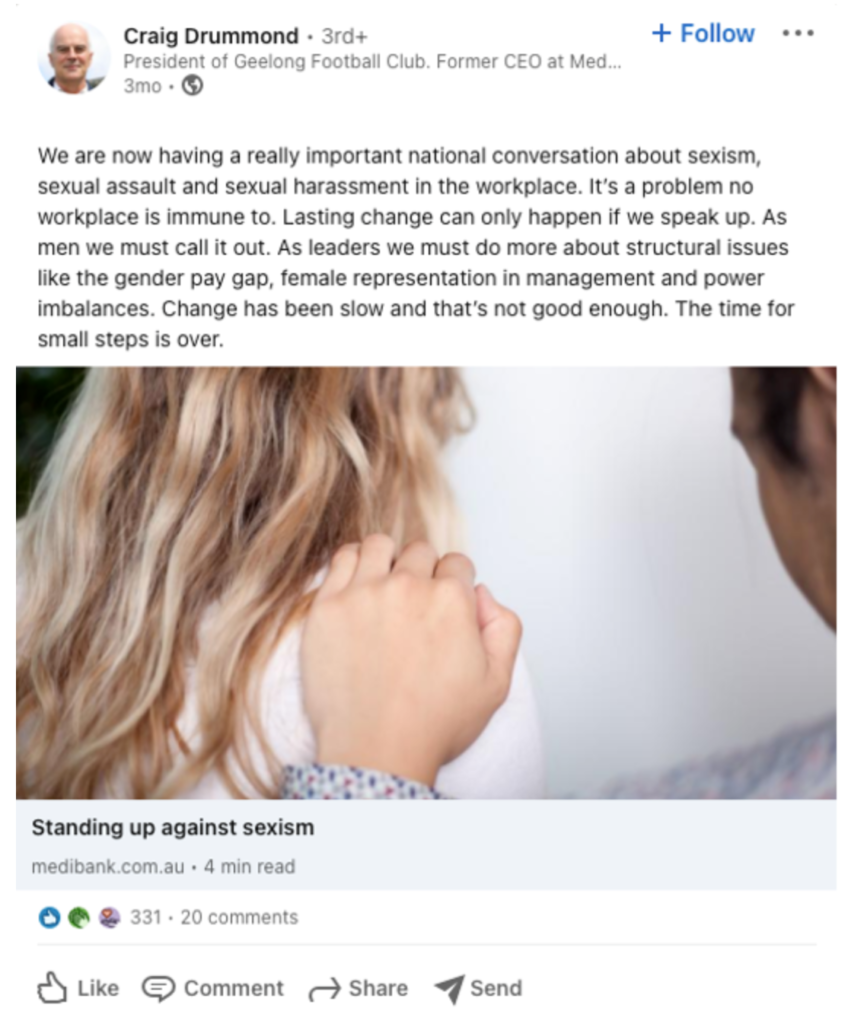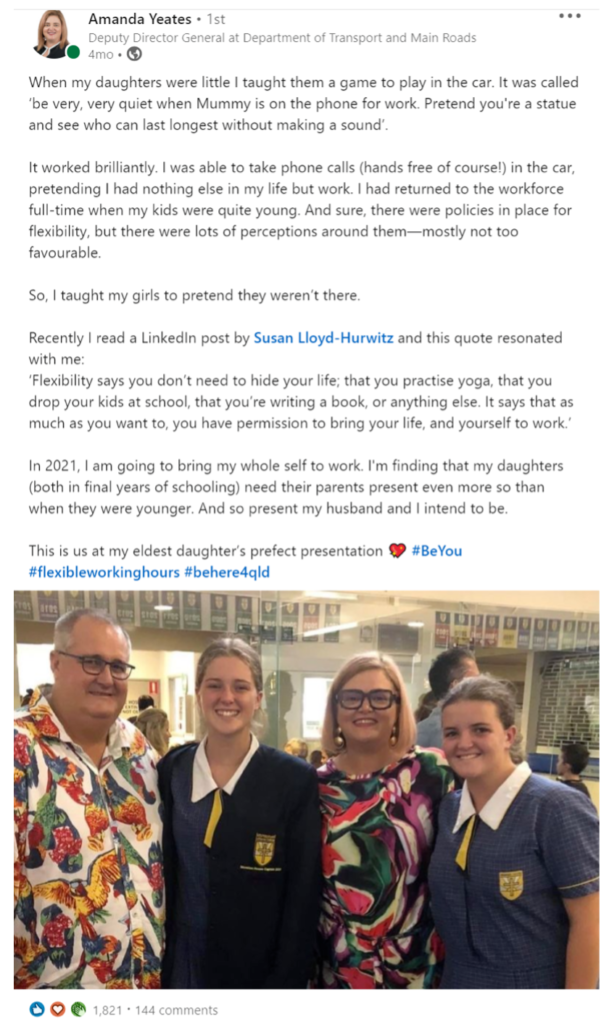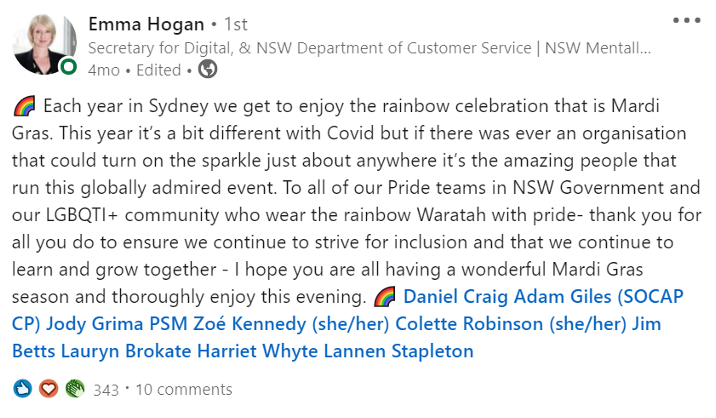Leaders: do you know where to get maximum ROE (Return On Effort) on your digital brand-building activities?
When staff, candidates, customers, shareholders and media stakeholders are all increasingly active online, where should leaders invest their ‘digital time’ for maximum effect today? External or internal social media? On the surface, it’s a relatively simple question. But in our COVID-affected world, the answer is increasingly complex.
The time leaders have to understand, communicate and reassure key audiences has greatly reduced, as the complexity of longer-term strategy and short-term operations has increased. As such, purposeful time spent listening and engaging online is competitive advantage. But to be purposeful, leaders need clarity and direction.
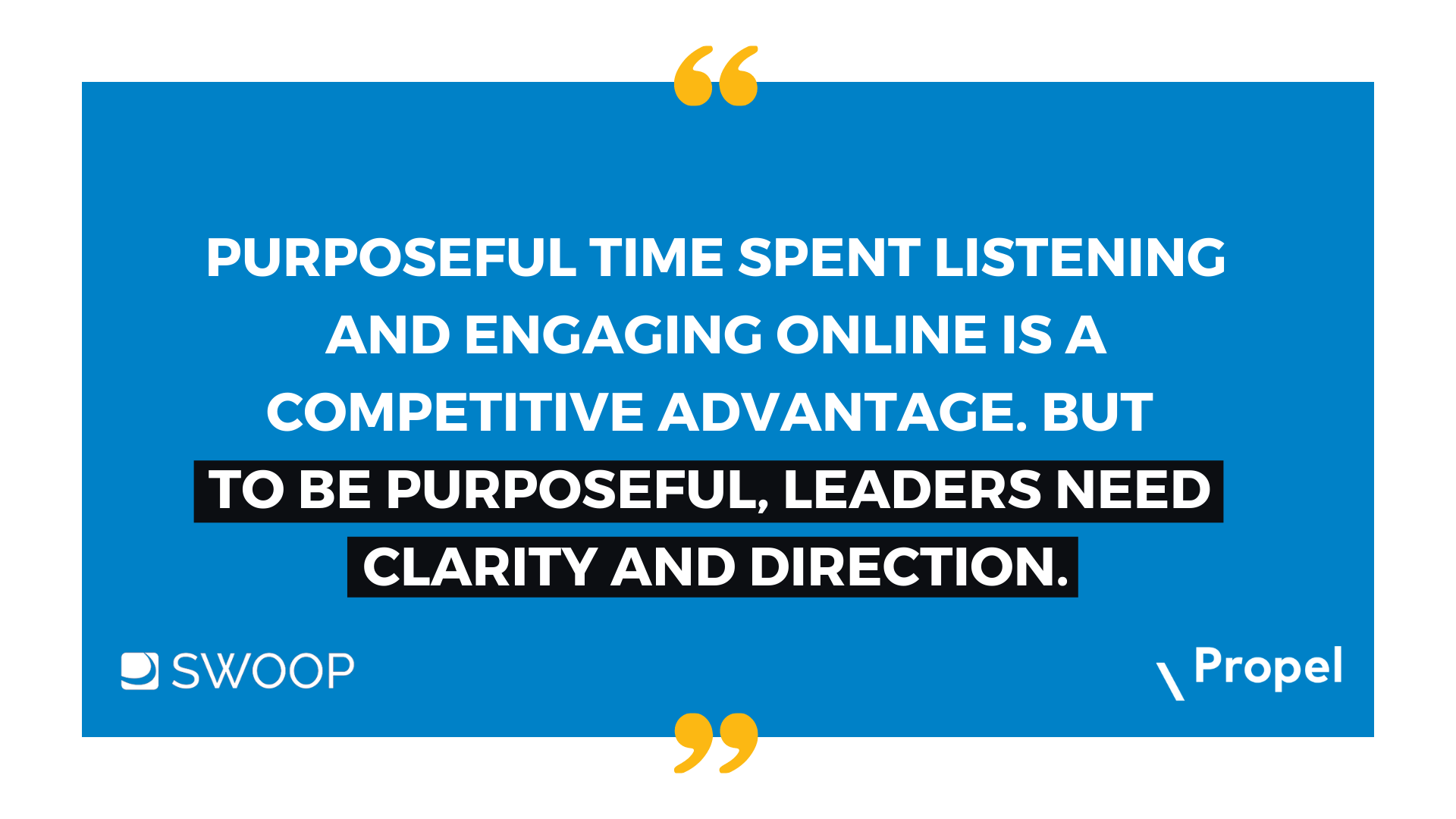 Where are you investing your time today?
Where are you investing your time today?
Whether you’re a leader, or someone advising leadership teams, are you focused on internal or external stakeholders? Do you spend your time on internal collaboration tools like Yammer or Workplace from Facebook, or on external platforms like LinkedIn or Twitter? And, most importantly, do you know which is most important for the audiences you need to reach?
The case for building an effective internal and external digital brand for leaders.
Over the past 18 months, we’ve seen a monumental shift in the way consumers, staff and industry are using digital channels. And we’ve seen the impact this has on leaders. Consider these numbers
- Your audiences are online. Last year, active social media users globally grew by 13.2% – almost twice the growth of internet users – with the average time spent on social media growing by 30% during the COVID-19 pandemic.
- You are expected to lead online. 86% of people now expect CEOs to publicly speak out on key social issues, with almost 75% of expecting them to do so via social media.
- Your best talent is watching you. CEOs who are active on social media are magnets for talent – employees are 5x more likely to want to work for them, compared with a CEO who is not active online.
- Your shareholders are watching you. Organisations that respond to a crisis in weeks experience a 10% greater stock decline than those who respond in hours.
- Executive engagement = employee engagement. Turnover rates are higher where leaders are not sharing information with staff.
If you weren’t prepared for the digital shift, or were only looking at one side of the story – internal or external – you’re not alone. That doesn’t mean you’re too late: what you do next is, in fact, a huge opportunity.
Propel and SWOOP Analytics have combined our industry expertise and evidence to prepare this recommendation for leaders – and those advising them – on how best to build and manage their digital brand.
Spoiler alert: Both internal and external participation is crucial for leaders right now, and we have a clear case for execution. One that will ensure the best leaders thrive. Because the reality is, the internal and external online worlds have already merged and leaders who focus on one over the other may come unstuck. Staff are monitoring your LinkedIn profile and shareholders are watching your tweets. In an age where everything is searchable and every leader leaves digital footprints, consistency and authenticity are key.
But it can be difficult to know where to start, what success looks like, and how to get there. Let’s learn from other executives who have seen and capitalised on the opportunity to become a consistent and effective digital leader.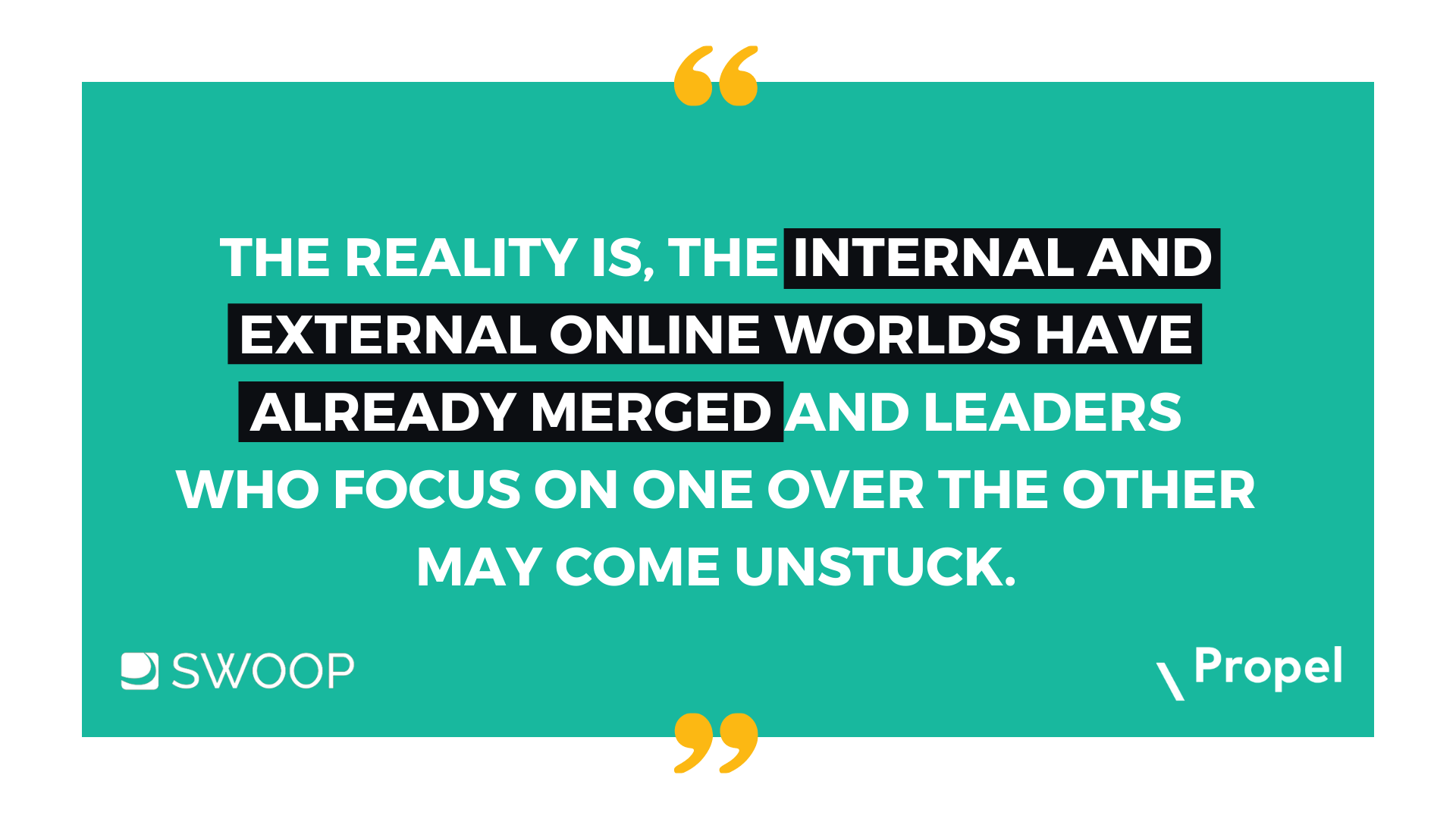
Which Australian leaders are setting the example online?
Fortunately, there are a handful of digitally-savvy Australian leaders who are themselves leading from the front and giving fellow executives wonderful examples to learn from.
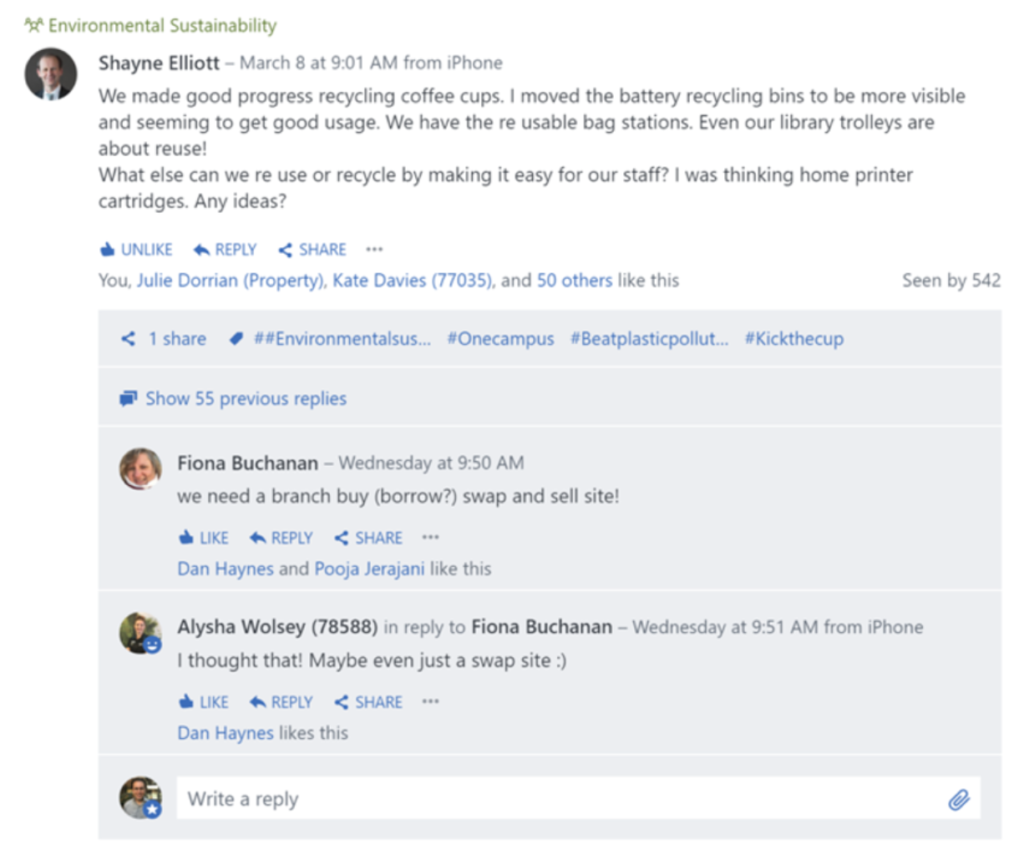
Data from SWOOP Analytics shows ANZ Bank CEO Shayne Elliott is always among the top 10 most influential people on ANZ’s Yammer network of more than 38,000 people. That means that while he’s not the most prolific poster or commentator, he initiates conversations, he gets people talking and sharing and he listens to what his people are saying.
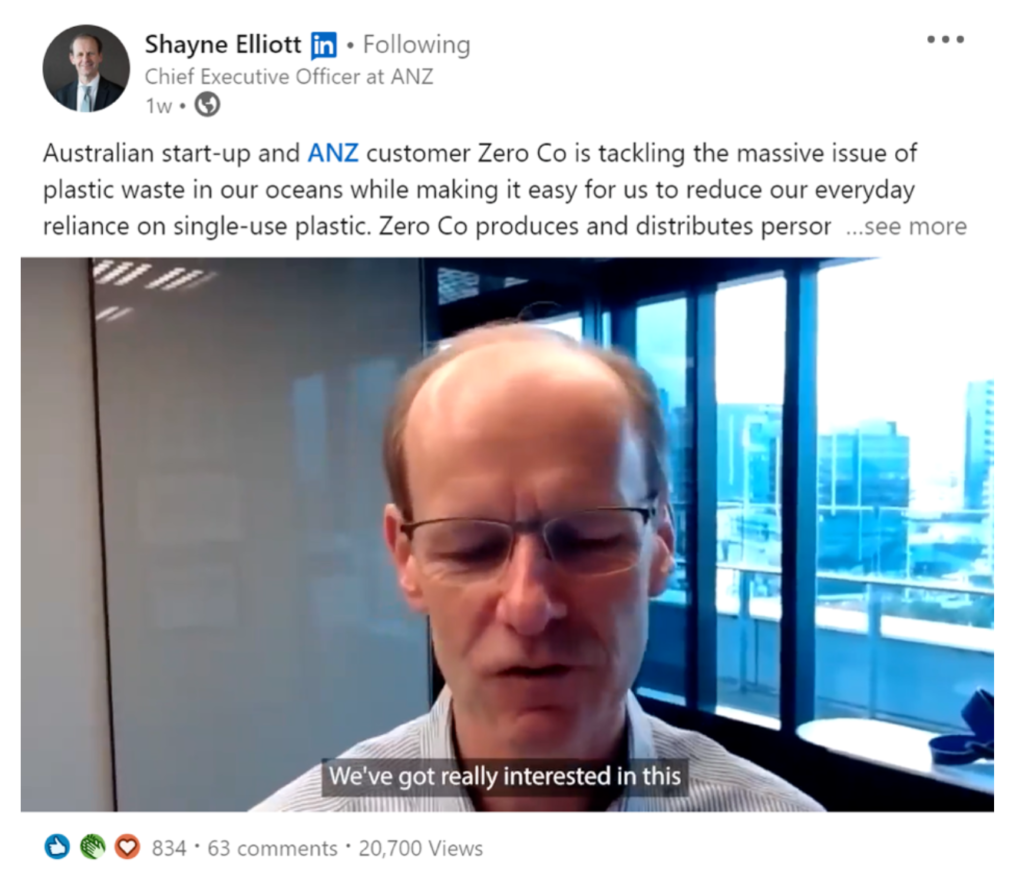 Importantly, Shayne’s external digital engagement efforts reflect his internal approach, as he and his team understand the value of communicating strategy to attract and retain staff, while also sending positive messages to the market. Shayne knows activities on external social media channels are just as effective at engaging staff (and candidates) as the internal social media equivalents. With an 85,000+ following on LinkedIn, and a commitment to elevating staff and their interests, Shayne empowers his team to harness social media in constructive, strategic ways.
Importantly, Shayne’s external digital engagement efforts reflect his internal approach, as he and his team understand the value of communicating strategy to attract and retain staff, while also sending positive messages to the market. Shayne knows activities on external social media channels are just as effective at engaging staff (and candidates) as the internal social media equivalents. With an 85,000+ following on LinkedIn, and a commitment to elevating staff and their interests, Shayne empowers his team to harness social media in constructive, strategic ways.

Former Medibank CEO Craig Drummond is known for his transparency and for giving others a voice online. Internally, Medibank – Australia’s largest private health insurer – launched a campaign to source a vision statement from among staff, led by Craig himself. He used a Yammer group called “Craig Chat” where he asked; “What does quality of life mean to you?” He explained that, while leadership were developing a vision statement, they wanted to hear from those who understood the organisation best – staff.
This form of ‘radical transparency’ and audience empowerment internally is matched by Craig’s public digital brand as well. The power of this alignment across internal channels like Yammer and external channels like LinkedIn means key stakeholders are consistently reminded of Craig’s leadership values and priorities. Externally, Craig regularly discusses his commitment to address workplace equality and its importance resolving a wide range of social issues. He even calls on other leaders to act, and use their digital presence to lead by example.
Despite perceptions of being hamstrung or unable to participate publicly online, there are some wonderful examples of government leaders building their own digital brand and setting an example for others. One such example is Amanda Yeates – Deputy Director General at Transport & Main Roads in Queensland. Though TMR is a SWOOP customer with an active internal community, it is Amanda’s public LinkedIn efforts that provide real inspiration. Breaking from public sector conventions, Amanda is respected for her honesty and encouragement for women in leadership, sharing personal stories that empower others to speak up.
Similarly, Emma Hogan – Secretary at the Department of Customer Service in New South Wales – uses her LinkedIn profile to celebrate the efforts of others. By reviewing her LinkedIn feed, you will gain a clear insight into the time and effort she spends recognising and celebrating team members and partners, reinforcing the ‘servant leader’ mentality fitting for her Department, and reminding the talent market she is a leader who cares for the success of her staff, not just the online soapbox.
Where should you start?
What can you take from these four examples to build your own purposeful digital brand – one that better connects you with staff, customers, shareholders, media and other stakeholders? Whether you feel comfortable internally or externally (or not!), we’ve summarised 10 simple-but-important steps to get you going in an easy to digest infographic (see snapshot below). Head over to SWOOP Analytics to access the infographic in full.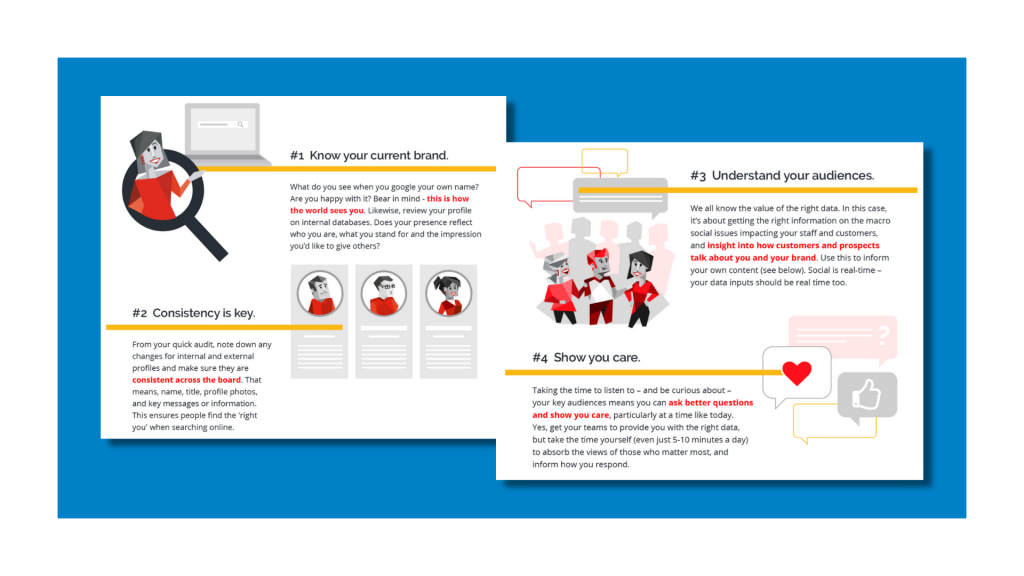
Every day is an opportunity to build your digital brand equity.
If you’ve been considering how best to build your own digital presence – or you feel you’re yet to truly harness both sides of your internal and external digital brand – we’d love to help. We encourage you to head over to SWOOP Analytics to download a copy of our Digital Brand Audit for Leaders to understand where you and your team can focus to build a holistic and effective digital brand.
If you have questions about the ideas and examples shared in this article, or you’d love to learn from other leaders already thriving online, please contact Emily (SWOOP) or Roger (Propel) to discuss. The digital environment presents a wonderful opportunity for leaders, and we are committed to helping you build your digital reputation and the presence you need to start reaping the rewards.
